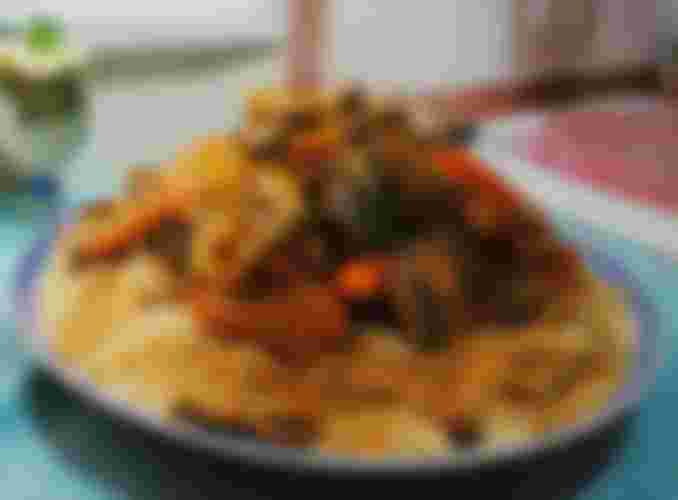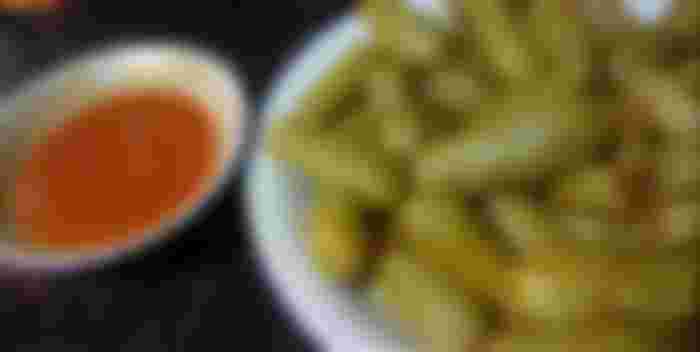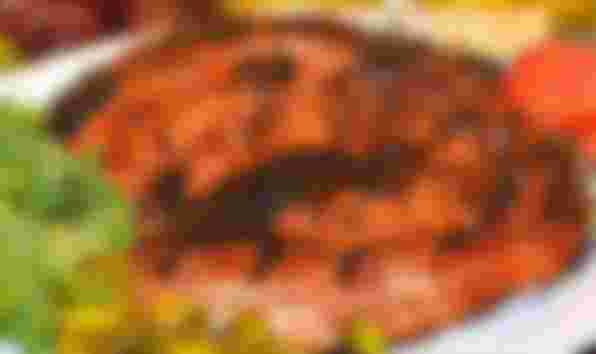Each Arab country is famous for its meal and a popular dish. Arab cuisine is known for its diversity and rich in dishes that compete with international cuisine.
One of the most important features of Arab folk dishes is that these dishes usually consist of food ingredients that are characteristic of the local Arab community, as well as influenced by Arab civilizations and the civilizations of countries that have passed and lived in periods in the Arab world, such as the Ottoman civilization. In this topic, we present to you the most popular popular foods in Arab countries as well as Islamic non-Arab ones whose dishes are usually very close to Arab dishes and have spread from these countries such as Turkey and Iran to the rest of the countries, as well as we address the historical origins of some of these foods.
Saudi Arabia:
Meat Kabsa: Kabsa is a popular dish in all parts of the Kingdom, with slight differences in its preparation. Kabsa is one of the meals that consist mainly of long-grain rice, which is served in the Gulf countries, and it is the main meal in Saudi Arabia, and kabsa is often cooked with lamb or goat or with chicken, and put with meat, ghee, nuts and raisins. We also find this dish derived from desert ingredients, which depend mainly on meat.

Jordan:
Al-Mansaf: The most famous meal of the Badia Al-Sham located between Syria, Iraq, Jordan and Palestine. Jordanians are the most famous for its preparation, as it is the national dish in Jordan, and it is closely related to the Jordanian culture. Mansaf is distinguished from the rest of Arab cooking by using jameed milk, which is made from milk after turning it into sour milk. Mansaf is closely related to the customs of the Badia of Levant (Jordan), as it is always present on all occasions, from weddings, banquets and even condolences. The way you eat it with your hands is especially important in these areas.

Maghreb:
Couscous: a popular dish in all countries of the Maghreb, especially Tunisia. The origin of the word goes back to the Berber language, and Bin Duraid mentioned it in the language group in the tenth century AD. Couscous is made from wheat or corn flour in the form of small grains, and it is taken with spoons or by hand.
It is cooked with steam and added to meat, vegetables, green pulverized beans, milk, butter and fine sugar, according to tastes and occasions. As for the word, it is derived from Sikso, an Berber word meaning the way small wheat grains are prepared.
It is one of the main meals and is known in most regions of North Africa (Algeria - Morocco - Mauritania - Tunisia - Libya) and Sicily in Italy and even in France, where it is the second favorite of the French. It was mentioned by many travelers, notably Charles Andre Julian, in his book The History of North Africa.

And tagine: the most famous Moroccan food at all, and it is distributed over more than one type, including meat with vegetables or with chicken, and Morocco is known as couscous, which is served cooked in tagine with vegetables as well.

The Lavent, especially Syria:
Zucchini stuffed with meat and tomatoes: One of the famous Levantine dishes, it consists of small hollow zucchini stuffed with a mixture of seasoned rice to taste, minced meat and ghee.

Iraq:
The Baja: A popular dish that Iraq is famous for. Some people eat it on cold winter days because it contains high nutritional value, but its preparation requires special care.

The Iraqi Maskouf: It is the most popular dish in Iraq, which is derived from its river environment. It consists of grilled fish, where the freshly caught river fish is brought and cracked from the back side along the fish up to its head, then it opens, then the fish’s intestines come out, cleans and slits in the fish’s skin two or three holes for a place. Hanging pegs. The best types of fish prepared for shrimp are brown or carp.
Palestine:
Al-Maqlouba: A popular Palestinian street food.

Al-Musakhan Al-Palestinian: a popular Palestinian dish consisting of loaves of taboon bread containing chicken meat between its folds and seasoned with a lot of sumac spices on which olive oil is sprinkled.
Lebanon:
Raw kibbeh: You will only find it in Lebanon! It consists of raw minced lamb or beef, which is mixed with bulgur and spices and garnished with fresh mint and olive oil.
It is a Levantine dish, especially famous in Lebanon and Syria. Ancient and most likely it goes back to Assyrian roots. It was and still is a luxury food consisting of meat, nuts and bulgur.
It is associated with a basic tradition that goes back to those regions, which is the ringing of the kibbeh with the jar, which was performed by the women and takes a lot of time and effort from them, which calls for the help of the men of the house in the old Damascene houses. It has different types from one country to another and from one city to another (savory, fried, Chinese, raw ... and others).
Today, special machines have been designed to mix and grind the kibbeh, which has saved great trouble for home women in the Arab countries.

The Egyptian Arabic Republic:
Egyptian Koshary: One of the popular dishes in Egypt, it is a mixture of rice, yellow lentils, small pasta, black lentils, onions and sauce.
It is a popular, ancient, popular Egyptian food that was mentioned by the Arab traveler Ibn Battuta. It consists of lentils, rice, fried onions and tomato sauce, and later the Egyptians (pasta) were added to it.
This food, which a tourist in Egypt cannot not taste from a carriage, is one of the most popular, low-cost and high-value foods.

Somalia and Djibouti:
Angelo: Angelo is a popular dish in Somalia and Djibouti. It consists of fino flour with fermented corn dough, two eggs, salt, and a loaf half a centimeter thick. It is usually eaten with margarine, honey or sugar for breakfast or dinner.

Turkey:
Shish Tawook: One of the most famous Turkish folk dishes. Grape leaves, or grape leaves, were originally Ottoman eaters. The name Yabraq goes back to the Turkish language, and its origin is “Yaraq” or “Yegraq,” which means tree leaves in general, or grape leaves in particular. The method of preparing it differs from one country to another, and the countries most famous for this dish are Syria and Lebanon. It consists of grape leaves, rice, meat or vegetables.


...and you will also help the author collect more tips.











I'm so surprised then I see how many kind of dishes exist on this world, and you presented it very well. Thank you! Actually, I'm master for cleaning this dishes.. I suppose you know what I mean..😁